This post may contain affiliate links. As an affiliate, we earn from qualifying purchases. We get commissions for purchases made through links in this post.
A common question among generator owners is whether they should incorporate a surge protector into the setup. The answer isn’t a straightforward yes or no; rather, it hinges on various factors. There are scenarios where the inclusion of surge protection between a generator and your appliances is unequivocally advisable for protecting from electrical surges. Conversely, there are situations where such precautionary measures may not be deemed essential, and the necessity may be contingent upon the specific type of generator in use.
Beyond the use of surge protectors, there exist alternative methods to shield your electronic devices from the potential harm posed by electric surges. This article aims to delve into the nuanced considerations surrounding the utilization of surge protectors in conjunction with power generators. Additionally, we will explore alternative strategies to fortify your equipment against the adverse effects of electrical surges, providing you with a comprehensive understanding of how best to safeguard your valuable devices.
What is a surge protector?
A surge protector, also referred to as a spike suppressor, serves as a vital electronic guardian for your electrical equipment, shielding them from potentially damaging voltage spikes or surges. The primary role of a surge protector is to create a safeguard against transient voltages, typically lasting between 1 to 30 microseconds, which exceed the threshold of 330V. By doing so, it acts as a barrier, preventing these voltage spikes from reaching and potentially harming your household appliances.
Typically equipped with multiple outlets for appliances, a surge protector functions by blocking excess voltage and diverting it away from your equipment. The key component enabling this protection is a metal oxide varistor, which exhibits the ability to alter its resistance based on the voltage it encounters. This dynamic resistance adjustment is crucial in swiftly diverting excessive current to a ground wire, thereby averting potential damage to your valuable devices.
It’s worth noting that, over time, a surge protector may experience a decrease in efficacy. The main culprit for this decline is the wear and tear on its primary component—the varistor. As the varistor transforms excessive current into heat during protective operations, its capacity to offer optimal protection may diminish with prolonged use.
Interestingly, there’s an alternative device known as a voltage regulator, which distinguishes itself by not wearing off over time and providing enhanced performance. The intricacies of this device and its comparative advantages will be explored further in the subsequent sections of this article.
What appliances need surge protectors?
Visualize the havoc a 1,000-volt spike could wreak on your computer or refrigerator—quite a chilling thought, isn’t it? In such dire situations, a surge protector emerges as the unsung hero, standing as the last line of defense for your precious appliances. There have been instances where the sacrificial role of a surge protector became apparent, absorbing the destructive impact and sacrificing itself to ensure the integrity of the connected high-value equipment, such as computers or refrigerators.
Consider the surge protector as a resilient guardian, ready to bear the brunt of electrical onslaught to safeguard your investments. This sacrificial act becomes evident when the surge protector, incurring damage, prevents the lethal voltage spike from reaching and harming your valuable appliances. It’s a small price to pay for the potential preservation of your more significant investments.
If you’re contemplating whether to employ a surge protector, the answer is not a universal one-size-fits-all. While not every appliance demands this added layer of defense, there are certain devices for which a surge protector is highly recommended. Devices like printers, TVs, water heaters, air conditioners, pumps, computers, refrigerators, power tools, and even smoke detectors fall into the category of valuable assets that can significantly benefit from the protective embrace of a surge protector.
In essence, the rule of thumb is to extend this safeguard to your most expensive and power-sensitive equipment. Smaller devices, such as lamps, hairdryers, or phone chargers, may not necessarily require the intermediary protection of a surge protector and can be directly connected to a wall power outlet without undue concern. It’s all about strategic protection tailored to the specific needs and vulnerabilities of your electronic arsenal.
Just imagine what a spike of 1,000 volts can do to your computer or fridge. There were cases when the surge protector was able to save expensive appliances by taking all the damage on itself and getting broken while having the valuable equipment that was connected to it intact.
- Power Strip with 18 outlets & 4 USB Ports: 18AC outlets & 4 USB ports (5V/3.0A, 17W) power strip with 6 feet Flat Plug Heavy Duty power extension...
- 6 Feet extension cord with Flat Plug and Cable Ties: 6 Ft Right Angled Flat Plug power cord makes it more flexible,Reusable Fastening Cable...
- 18 AC Surge Protector Outlets: The 3 level complementary Surge Protector Circuit which composed of TVS (transient voltage suppressor), MOV (metal...
- Safety and Certificate: ETL safety certified, with extension cord and other major components certified by UL. The over current protection switch...
- Our After Sale Service: ETL Certified, Our friendly and reliable customer service will respond to you within 24 hours. You can purchase with...
Do you need to use a surge protector with a generator?
The question of whether to use a surge protector with a generator introduces a layer of complexity, as the answer pivots on the specific type of generator in use and its inherent surge protection capabilities.
In the realm of inverter generators, the need for an additional surge protector is rendered unnecessary. These sophisticated generators employ a unique technique, converting AC current to DC and then back to stable AC, effectively transforming initially high-fluctuating AC power into a pristine and surge-free electrical output. In essence, the design of inverter generators inherently incorporates surge protection, making them an ideal choice for powering sensitive electronic and electrical devices such as refrigerators, computers, mobile phones, water heaters, and air conditioners.
On the flip side, conventional generators equipped with a mechanical alternator may lack the built-in surge protection found in their inverter counterparts. The mechanical alternator, susceptible to varying RPMs of the internal combustion engine, introduces the potential for surges that could compromise the well-being of connected appliances. In such cases, the prudent course of action involves employing a surge protector as a vital intermediary shield between the generator and its consumers. This strategic measure becomes particularly crucial to mitigate the risk of surges that could emanate from the fluctuations in the internal combustion engine.
In essence, the decision to use a surge protector with a generator hinges on the specific generator type, with inverter generators standing as a beacon of self-contained surge protection, while conventional generators may necessitate the additional safeguarding offered by surge protectors.
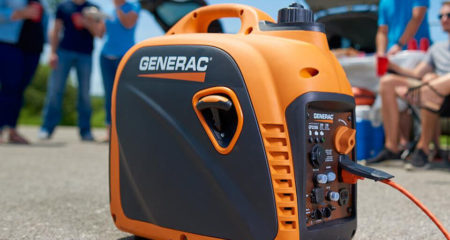
Do you need a surge protector with a standby generator?
A standby generator is not affected by external devices that cause a lot of power surges. Therefore, there are fewer chances of a power spike happening. However, it still makes sense to protect your most valuable equipment with a surge protector even when using a standby generator as a backup for your whole house.
Besides that, the 2020 NEC code requires a whole-house surge protector for every household to ensure the safety of all electrical equipment. Briggs & Stratton even recommends its customers buy a surge protector with every generator they sell.
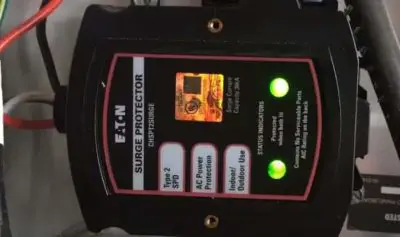
Do you need a surge protector with a portable generator?
Ensuring the protection of your valuable equipment is paramount, and when it comes to portable generators, the inclusion of a surge protector is often a wise choice. Portable generators, by their nature, can introduce voltage fluctuations that pose a risk to your equipment. The unpredictable nature of power output from portable generators makes it essential to mitigate potential damage, and a surge protector serves as a reliable ally in this endeavor. By stabilizing the electrical current, a surge protector acts as a safeguard, preventing costly troubles from arising and maintaining the longevity of your electronic investments.
It’s worth noting, however, that if you happen to be using a portable inverter generator, the need for a surge protector diminishes. The inherent design of inverter generators, with their ability to convert and stabilize AC power output, alleviates the concern of voltage fluctuations. In such cases, the inverter generator’s built-in surge protection mechanism obviates the necessity for an external surge protector, offering a streamlined and efficient solution for powering your sensitive electronic devices on the go.
Does a Generac generator need a surge protector?
Indeed, a Generac generator, like any other generator, has the potential to generate electric spikes that can pose a threat to your connected equipment. Employing a surge protector in conjunction with your Generac generator is a prudent measure to safeguard sensitive devices from these surges, ensuring their longevity and optimal functionality. The universal applicability of surge protectors to generators reinforces the idea that it’s a sound practice to integrate this protective component into your power generation setup.
Notably, Generac, as a generator manufacturer, underscores the importance of surge protection. They go a step further by strongly recommending the installation of a whole-house surge protector, both indoors and outdoors. Generac even provides a branded device designed specifically for this purpose. This emphasis on comprehensive surge protection aligns with the recognition of the potential impact that electrical surges can have on your household appliances and electronic devices. By heeding the manufacturer’s recommendation and incorporating a surge protector, you’re taking a proactive step to fortify your entire home against the unforeseen consequences of power fluctuations associated with generator usage.
What is the best surge protector for generators?
Not every surge protector works equally well for your generator. So, if you’ve decided that you want to protect your entire house or specific equipment from power fluctuations caused by a non-inverter generator. Here is a list of some of the best surge protectors:
The first 2 surge guards are for protecting specific devices, while the last 3 are for protecting your entire house.
Check my article if you need more selection of the top surge protectors for any type of generator
Can you connect a surge protector to the generator?
Yes, surge protectors can be connected directly to a generator. However, some surge protectors are designed for indoor use only.
This means, in case you’re generator is installed completely outdoors (with no rain protection), you’d be safer if you use a power extension cord that has water protection of IP67 or higher. Then, you can connect one end of a power extender to the generator’s 120V outlet, while another end can be brought inside and used as a socket for connecting it to a surge protector.
What is an automatic voltage regulator?
An automatic voltage regulator is a surge protector by definition. It’s an electrical device that protects your equipment from a power surge and it does so automatically, without any manual intervention on your part.
The automatic voltage regulation (AVR) was originally developed for surge protection of critical systems such as medical devices, radio, and TV broadcasting stations, and telephone networks, it can withstand a higher range of spikes and is a more reliable protection for your appliances.
If you’re taking your electrical equipment surge protection seriously, then you’d have the highest spike protection when using an AVR when compared to basic protection offered by a surge-protecting power strip.
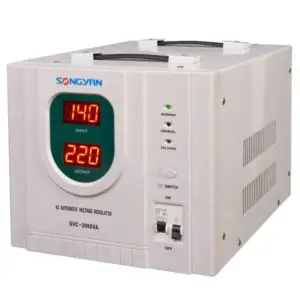
Is UPS better than a surge protector?
A surge protector is a quick-fix solution if you’re on a limited budget. You can get surge protection devices that cost as little as $15. But, they offer limited protection and will become damaged if a strong surge happens. Another better way to protect your appliances from power surges and also have a short period of emergency power is to use a UPS.
A UPS is a surge protector plus a battery that delivers power to your equipment when the surge happens or if there’s a blackout, giving you enough time to back up and save all your work in progress.
If you’re serious about surge protection for generators, then using a UPS is another great and more reliable alternative compared to a standard surge protector. In essence, UPS works as an AVR, but, it also provides you with a few minutes to do a backup on your computer.
Can You Use Power Strips With Generators?
You can do so, but, be advised: power strips are not the same as surge protectors. They do not protect you from surges created by a generator.
A power strip is also called an extension lead, and, its main purpose is to provide you with more power outlets that you have in one part of a room so you can connect multiple devices to one outlet.
While power strips look very similar to surge protectors they do not have a spike protection functionality. If you need to distinguish a surge protector from a power strip, see if the item in question has a Joule rating written on it. Only the surge protector will have this rating, while the power strip won’t.
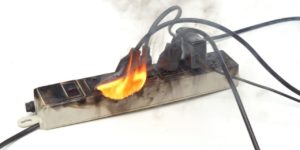
How do I protect my electronics from surges (when using a generator)?
We already talked about surge protectors and automatic voltage regulators, but, if you’re looking to protect every device from a power surge, then, here are must-have tips to help you:
-
use a trusted generator brand (preferably inverter type)
-
install a surge protector between a generator and your household’s power grid
-
use a surge arrester for the whole house
-
use a UPS for your computer
-
consider using an AVR
Having said that, if you are on a budget, then, protecting the most important electrical equipment with a reliable surge protector would be enough in most cases, especially, when combined with a stable generator.

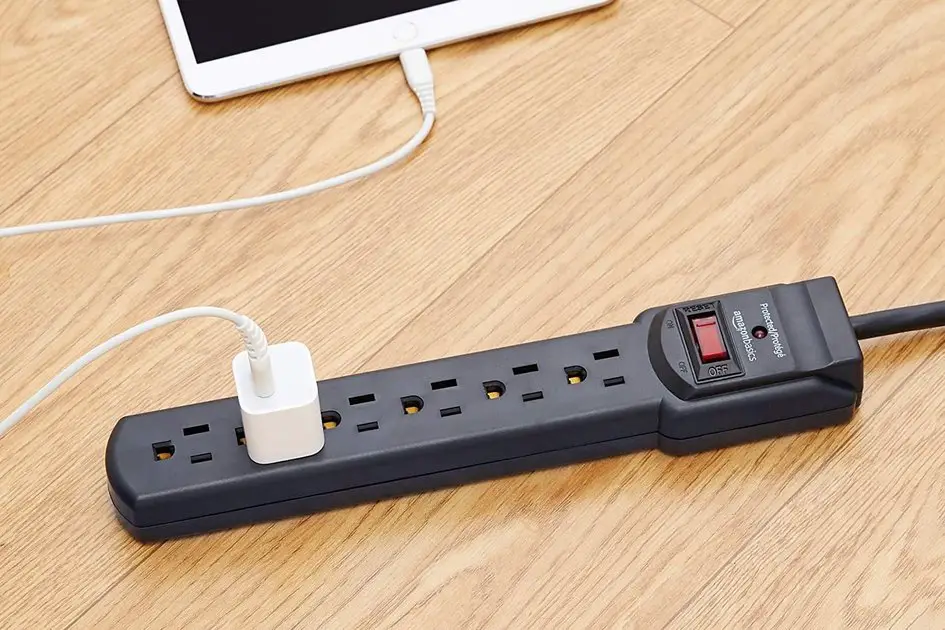





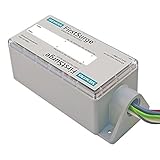


2 thoughts on “Should You Use a Surge Protector with a Generator?”
Comments are closed.